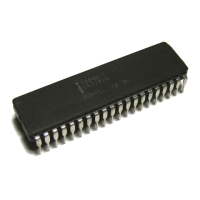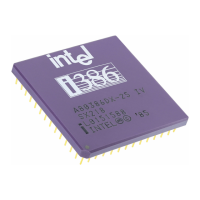Clocking
R
Intel
®
815 Chipset Platform Design Guide 131
11 Clocking
For an Intel 815 chipset platform, there are two clock specifications. One is for a 2-DIMM
solution, and the other is for a 3-DIMM solution. In both specifications only single-ended clocking
is supported. Intel 815 chipset platforms using a future 0.13 micron socket 370 processors cannot
implement differential clocking.
11.1 2-DIMM Clocking
Table 28 shows the characteristics of the clock generator for a 2-DIMM solution.
Table 28. Intel
®
CK-815 (2-DIMM) Clocks
Number Clock Frequency
3 processor clocks 66/100/133 MHz
9 SDRAM clocks 100 MHz
7 PCI clocks 33 MHz
2 APIC clocks 16.67/33 MHz
2 48 MHz clocks 48 MHz
3 3V, 66 MHz clocks 66 MHz
1 REF clock 14.31818 MHz
The following bullets list the features of the Intel CK-815 clock generator in a 2-DIMM solution:
• Nine copies of 100 MHz SDRAM clocks (3.3V) [SDRAM0…7, DClk]
• Seven copies of PCI clock (33 MHz ) (3.3V)
• Two copies of APIC clock at 33 MHz, synchronous to processor clock (2.5V)
• One copy of 48 MHz USB clock (3.3V) (non-SSC) (type 3 buffer)
• One copy of 48 MHz DOT clock (3.3V) (non-SSC) (see DOT details)
• Three copies of 3V, 66 MHz clock (3.3V)
• One copy of REF clock at 14.31818 MHz (3.3V)
• Ref. 14.31818 MHz xtal oscillator input
• Power-down pin
• Spread-spectrum support
• I
2
C support for turning off unused clocks
• 56-pin SSOP package
Figure 68 shows the Intel 815 chipset platform clock architecture for a 2-DIMM solution.

